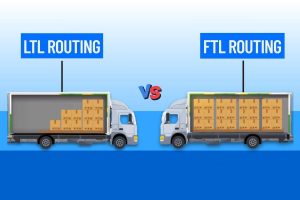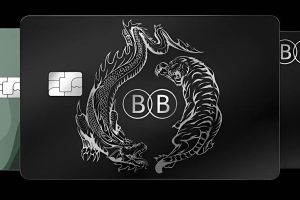Creating and publishing an e-book can serve a variety of purposes, such as building an audience or generating potential leads for your business. Writing and publishing an e-book is by no means an easy task. Therefore, before diving in, make sure you are fully committed and prepared. The market and demand for e-books are increasing exponentially, and with so many tools available at your disposal, a poorly designed e-book is a big no-no. The primary focus of this article will be on how to make an e-book that can attract people to it.
What Is An E-Book?
E-book stands for “electronic book”. As the name implies, an e-book utilizes electronic devices such as a mobile or a computer as a display. These types of books have numerous digitalized pages that people can scroll or navigate through. They usually use PDF format for packaging, which makes it easier to access and transfer from one person to another. Other formats include EPUB (Electronic Publication), AZW (designed for Kindle), and ODF (Open Document Format).
Why Make an E-book?
Why would someone go down the path of creating and publishing e-books instead of just following the traditional method of writing books? Here are some reasons why e-books have an edge over their traditional counterparts.
-
Increased Exposure
Since most e-books are published in PDF formats, it is easier to send them from one individual to another. This translates to more exposure as more and more people get to read it.
-
New Revenue Prospects
People think that bloggers and business owners make money by selling their products. This isn’t truly the case as a major portion of their income comes from marketing strategies tied to an effective e-book.
-
Loyal Fanbase
If you want to create a loyal fanbase of customers or subscribers, the most effective way is to approach them via email and introduce them to your e-book. You can then convert these leads into potential customers later down the road
Steps to publish your Ebook
If you are interested in how to publish a poetry book or any other type of ebook, then there are several steps that you will need to take. First, you will need to identify a literary agent or publisher who is a good fit for your work. This may involve doing research on various publishers and agents to find the ones that specialize in books or have a track record of success working with authors.
Once you have identified a potential publisher or agent, you will need to prepare your manuscript for submission. This may involve revising and editing your work as well as creating a compelling cover letter to accompany your submission. You may also want to consider hiring an editor or proofreader to review your manuscript before sending it out.
Once you have your manuscript ready, you can start pitching to publishers and agents. This may involve sending out query letters or scheduling meetings to discuss your work in more detail. If a publisher is interested in your book, they may ask you to submit a formal proposal outlining the details of your project.
Why Should E-books Be Used for Businesses?
E-books are becoming mainstream in today’s marketplace. According to a study, the percentage of people in the United States who read e-books has increased substantially from 2011 to 2018. If we keep experiencing the same trend, publishing e-books can become the go-to means for digital media.
However, before you start creating one, you need to make sure your eBook is appealing enough for your target audience to download it. So, without any further ado, here are some important tips that you should consider while creating and publishing your eBook.
-
Identify Your Target Audience
Before creating your very own eBook, you must invest time in researching your target audience. If you do not know what your target audience is, you are firing an arrow in the dark. If you are a business owner, the main goal of your eBook is to generate leads which your sales team can utilize. So, target a specific audience and make your eBook more enticing to download by covering a specific niche or by addressing an issue.
-
A Good E-book Cover Goes a Long Way
Contrary to the popular saying “Don’t judge a book by its cover”, your eBook cover can be a crucial factor in determining whether or not your eBook is going to get popular among the masses or not. Having an appealing cover can easily lure a large audience. While creating a cover for your eBook, you should keep in mind “First impression is the last impression”. Your eBook cover is the first thing your audience will notice, and if it isn’t tempting enough, it might as well be the last.
While designing a cover, you should make sure the font you use is pleasing to the eye and legible. Your audience should know the value your eBook is going to provide. Images can also be used but make sure they are relevant to your topic and don’t come as a form of clutter.
-
Add an Intriguing Topic and Title
After successfully identifying your target audience, you should come up with a catchy title for your eBook topic. One that will leave your target audience flabbergasted and answer all their inquiries. In order to achieve this, your eBook should cover a specific niche. To make your eBook popular among the masses, passion and firm grasp of the topic your eBook covers are essential. To make your eBook more appealing to the audience, try sharing some personal experiences regarding the niche you tend to cover in your eBook. It greatly increases the credibility and authority of your eBook.
-
Proper Editing and Formatting
Once you are done with the cover and title, you need to write your eBook and format it in a manner that it’s easy to read. This is the make-or-break phase of your eBook. If you don’t know what you are doing, you will be experiencing a lot of obstacles. For writing eBooks, Google Docs is an extremely viable option due to a variety of reasons. Firstly, it’s totally and has all the necessary features so the money you save can be spent on something else. Secondly, converting a Google Doc file into a PDF is a total breeze. You don’t need to worry about losing your work either as it automatically saves your work to the Cloud. Microsoft Word can also be a decent alternative. Buying premium software solely for the purpose of writing an eBook isn’t worth it. After applying the final touches, you need someone to proofread your eBook and point out any possible mistakes. You should get your eBook proofread by a person who doesn’t shy away from giving harsh feedback. Use software such as Grammarly to filter out any grammatical mistakes prior to publishing your eBook online.
-
Incorporate Visuals
We have already discussed formatting and editing your text, but incorporating images and graphics can be hard to get right. However, if utilized properly, they can be used to illustrate the main points and get your message across. Before using images, make sure you acquire permission from the author so that you avoid copyright issues further down the road. Try not to go overboard while incorporating visuals and graphics.
To Sum It All Up
Now you have a basic understanding of how to create and publish an eBook. Make sure you follow each step, so the eBook appeases your target audience and addresses their issues. You don’t need to hire the services of a professional designer or empty your pocket on premium software. Freebies such as Google Docs and Microsoft Word can get the job done for you. Keep in mind the format you publish your eBook in allows for easy transfer. By nailing the basics, you can be on your to creating and publishing an awesome eBook.












